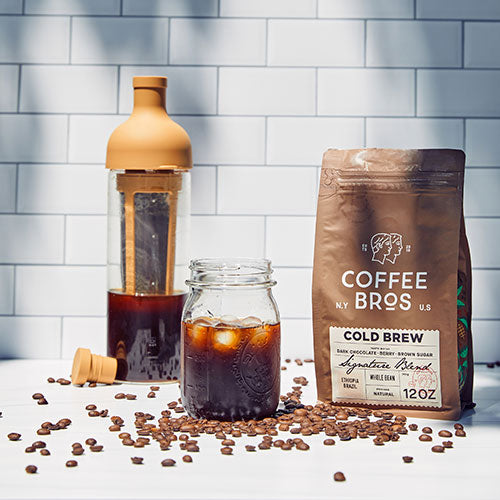Introduction
Like our opinion on upgrading your espresso machine, if your grinder is not broken and producing great espresso, don’t upgrade your machine!
It would be too easy to tell you the top 7 reasons to upgrade your espresso grinder based on the latest and greatest tech; there’s always a new Kickstarter raising funds for some innovative espresso grinder, but keep your gear until you have a reason to upgrade.
One of the number one reasons your espresso machine is not producing great coffee is due to the grind! Hear us out here; from the most basic principles of espresso, your machine should hit a standard 9 bars of pressure, and your espresso drink recipe (depending on the shot type) should hit the total volume within 28 – 32 seconds. If your espresso machine is brewing normale shots (1:2 ratio) in under 20 seconds and you can’t figure out why, don’t blame the espresso machine; you need to look closer at your grinder!
Before we dive into why you may need to upgrade your grinder to brew better espresso, note that buying new doesn’t always need to be your first option. We have purchased and sold several grinders on the Used Coffee Gear website and would also imagine Facebook Marketplace to be a potentially decent option. We also have great suggestions if you want something new and a grinder that will last a long time!
Coffee Subscription Deal
Subscribe to Coffee Bros. coffee for 25% off when using code "FTSUB25" at checkout
Here are the top 7 reasons to upgrade your espresso grinder
Your espresso drinks don’t taste the way you expect them to
Every decision regarding espresso brewing should stem from whether your drink tastes how you want it to. If, no matter how hard you try, you cannot get your espresso and espresso drinks to taste café quality, it is time first to evaluate the coffee you are using and then look at the equipment you are brewing with.
If your espresso is coming out exactly how you want it to and you are happy with the results, stop here; there is no need to jump on the bandwagon of the latest and greatest grinder technology, as you have already reached the pinnacle of espresso brewing.
Your espresso grinder does not grind fine enough
Not every coffee grinder can reach espresso grind levels, which is extremely important when brewing the perfect cup of espresso.
How can you tell if a coffee grinder is meant for espresso?
- It is labeled as an espresso grinder: Make sure you carefully read the descriptions and find a grinder that is a dedicated espresso grinder.
- It has the grind range for espresso: Grinders on the market claim to work well across all brew types, but you will want to find one with a grind range of 180 – 1,000 μm (micrometers) to achieve the fineness needed for espresso brewing.
If your current grinder cannot produce a shot of espresso within a particular recipe time range, no matter how fine you grind, you are most likely using a grinder that is not graded for espresso. There are other potential reasons for a shot of espresso to run too slow or fast, like over or under-stuffing your basket, but usually, the grinder you are using is not cut out for the job.
Your grinder does not work well for lighter roasts
When you start to explore various coffee roast levels, you'll soon realize how the performance of your espresso grinder varies with different coffee types.
As you begin exploring different flavor profiles or lighter roasted coffees, you may discover that the grinder you currently use does not work well.
For lighter roasted coffees or more modern flavor profiles and processing methods, flat burrs tend to perform best. If you only want to achieve big-bodied classic-tasting espresso (chocolatey and nutty profiles), then conical burrs are the way to go.
To make some generalizations here, conical burrs tend to work better with medium to darker roasted coffees and produce more body and often crema in the cup. While flat burrs work well within a medium to darker range, you lose a little bit of body, but the flat burrs excel with lighter roasted coffees.
It is not easy to choose one type of grinder over another (conical grinders are also usually cheaper, louder, and less efficient but produce the kind of espresso many are looking for). Many home baristas opt in overtime for two grinders, but that can certainly be overkill for many.
Recommended Reading: Finding the best espresso grinder, our recommendations
You are looking for a quality-built machine that will last
Build quality extends beyond the external grinder casing, with materials like plastic, aluminum, and stainless steel commonly used for the frame. When evaluating grinders, consider the motor wattage – higher-wattage motors can handle coffee grinding more efficiently, reducing the risk of clogs. However, wattage alone doesn't guarantee motor quality. Additionally, look for noise-reduction features and internal insulation or rubber components to achieve a quieter grinding experience.
Dialing in new coffees is challenging to do
If you find yourself wasting lots of coffee when trying to dial in your espresso upon purchasing a new bag of coffee, then you are not alone.
Finding an espresso grinder with infinite or stepless adjustments is crucial when dialing in a coffee for espresso. It is ideal to have a grinder like the Eureka Mignon Specialita that has an endless adjustment; a slight turn of the knob and you are at a whole new grind size, but it does make it more challenging to keep track of precisely what setting or grind size you are on. This is why it is ideal to have an espresso grinder with stepless adjustments and well-marked positions for you to keep track of when dialing in your coffee.
If you consistently purchase the same few coffees, and they all arrive a few days post-roast dates, you should be able to begin understanding what a good setting is upon first arrival and how those changes as the coffee ages. That said, finding a grinder with clearly marked grind adjustments is a must.
We have worked with grinders like the Baratza Sette 270wi, a step/stepless adjustment grinder with 30 macro steps and 9 marked micro stepless adjustments, which grinds beautifully and is easy to dial in espresso.
Your espresso grinders doesn't have any parts of upgrades available
As with any espresso equipment upgrade (espresso machine or grinder), you must ensure your future purchase is from a reputable manufacturer and that parts and upgrades are readily available.
We always suggest looking at manufacturer warranties, looking for spare parts online, and even seeing what models or manufacturers your local espresso repair shop might work on.
It is essential to know that if your espresso grinder needs a repair, you have a warranty that can help, or you can find the parts or people that can help.
Finally, it is excellent to know if there are aftermarket parts for your espresso grinder, like burrs, hoppers, and bellows, as this is another excellent sign that others love this machine and are investing in parts and upgrades.
The built-in grinder just doesn't cut it
Many home baristas often begin with an espresso machine with a built-in grinder. While this choice may seem practical initially, it comes with potential downsides. If the built-in grinder underperforms or malfunctions, the entire espresso machine requires servicing, as the grinder is integrated. While making excellent espresso shots with these machines is possible, it's crucial to recognize their limitations.
Espresso machines with integrated grinders have limited internal space, typically featuring conical burr grinders. While conical burr grinders can produce quality espresso, it's important to note that they are better suited for specific coffee types and may not achieve the fine grind consistency required for lighter roasted coffees.
Our espresso grinder picks
Best Budget Conical Grinder
Baratza Encore ESP | Espresso Grinder
The Encore is Baratza’s most-trusted grinder, and now re-engineered to be optimized for espresso. The Encore ESP features new metal internals for highly consistent grinds and durable, long-lasting operation. It comes with an anti-static portafilter dosing cup for faster workflow and reduced mess!
Features
- 40mm conical burrs
- Micro step adjustment from #1-20 for espresso grinding
- Macro step adjustment from #21-40 for filter brewing
- 230-gram bean hopper capacity
- Easy removable and adjustable burrs for cleaning and calibration
Best Mid-Tier Conical Grinder
Baratza Sette 270Wi | Espresso Grinder
The Sette 270Wi is designed with a built-in scale that utilizes Acaia weighing technology for precise and accurate weight-based dosing, with a sensitivity of 0.1 gram. This grinder has a revolutionary feature of being able to grind by weight directly into a portafilter, an innovation in grinding technology.
Features
- 40mm conical burrs
- Built-in Acaia high precision scale
- Digital and programmable LED display
- 30 macro and 9 micro stepless adjustments
- Low espresso ground retention
Best Mid-tier Flat Burr Grinder
Eureka Mignon | Espresso Grinder
The Eureka Mignon Specialita is the perfect choice for the home barista who wants to achieve high-quality grinds with ease. This grinder features 55mm flat burrs, a stepless grind system, and a sound-insulating metal case with rubber mounts and gaskets that make the operation almost silent.
Features
- 55mm flat burrs
- Stepless micrometric adjustments
- Digital display and control
- Silent technology
- Powerful 260W motor
Best High-end Flat Burr Grinder
Eureka Atom 75 | Espresso Grinder
Blending coffee shop quality with the convenience of a home café, the Eureka Atom 75 Espresso Grinder effortlessly combines functionality and aesthetics. This unwavering focus on grind quality positions it alongside many commercial-grade espresso grinders while offering features tailored for home baristas.
Features
- 75mm flat burrs
- Stepless micrometric grind settings
- Digital display and control
- Low retention
- Powerful motor reaching 1650 RPM burr speed




